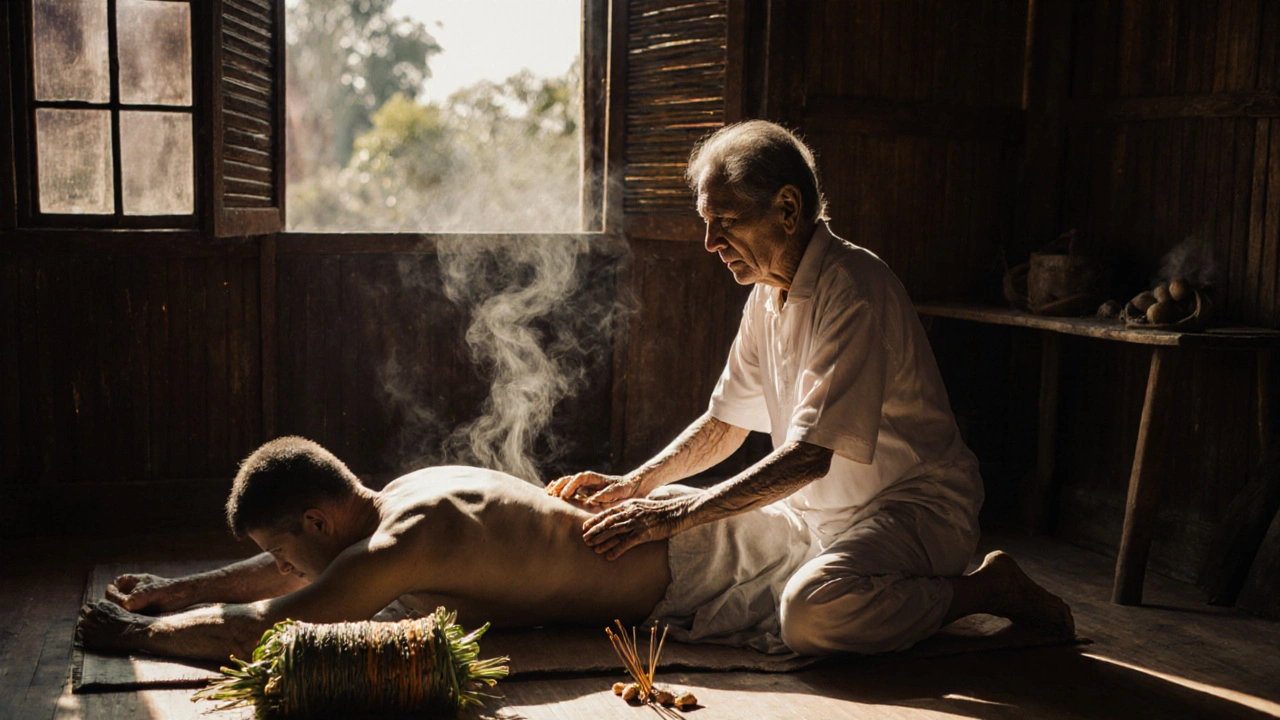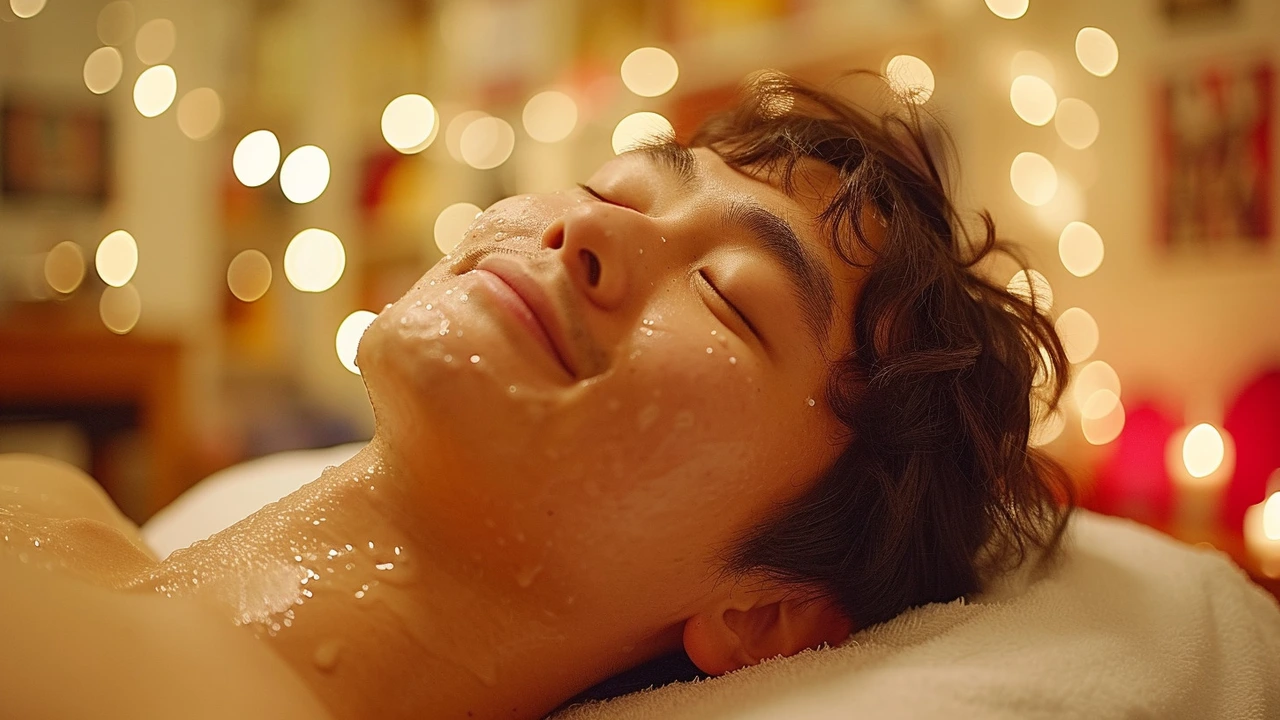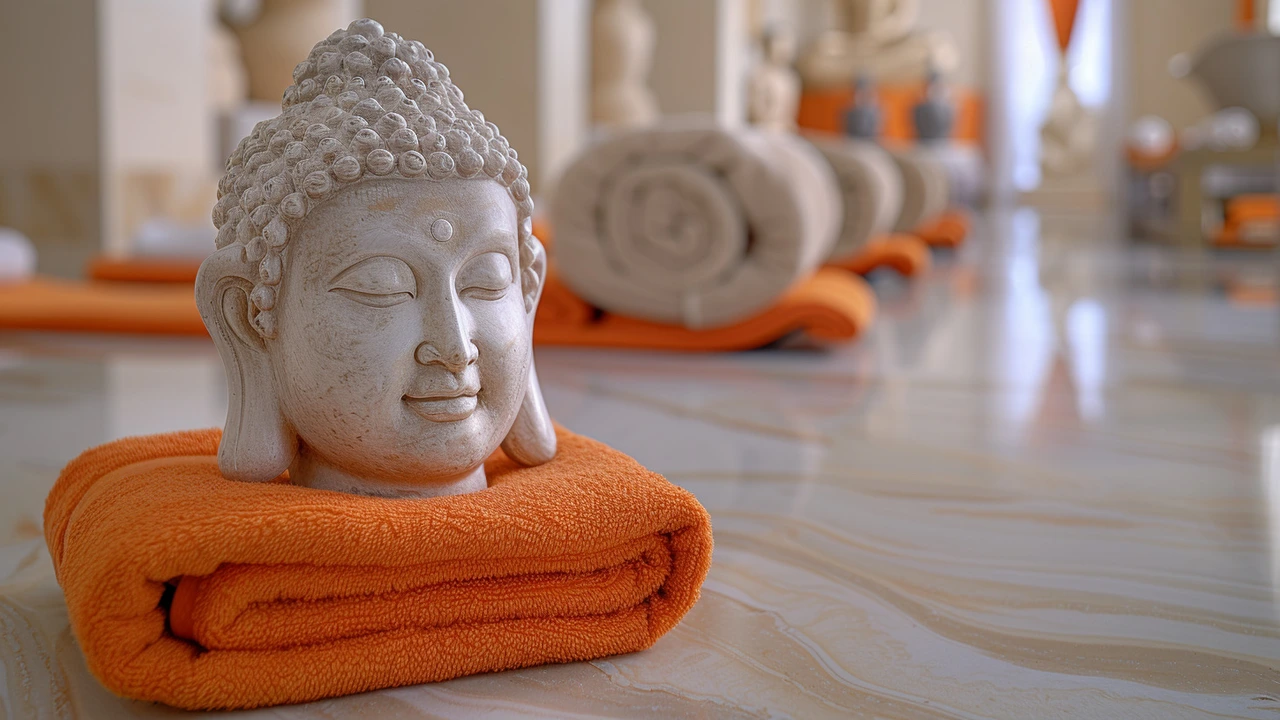Traditional Lao Massage: Authentic Techniques, Benefits, and Where to Find It
When you hear traditional Lao massage, a slow, rhythmic form of bodywork rooted in Southeast Asian healing traditions that combines acupressure, stretching, and herbal compresses. Also known as Lao bodywork, it’s the quiet cousin of Thai massage—less flashy, but just as powerful for releasing tension and restoring balance. Unlike Thai massage, which often uses more aggressive stretching and is performed on a mat with the client fully clothed, traditional Lao massage moves at a deeper, more meditative pace. It’s not about flexibility—it’s about feeling your body unwind, one gentle press at a time. Practitioners use their thumbs, palms, elbows, and sometimes even feet to apply pressure along energy lines called sen lines, the Lao equivalent of meridians, believed to carry life energy through the body. These lines run from your head to your toes, and when blocked, they cause stiffness, fatigue, or even emotional heaviness.
What makes traditional Lao massage stand out isn’t just the technique—it’s the intention. In Laos, this isn’t a luxury—it’s a daily ritual passed down through generations. Grandmothers use it to ease their grandchildren’s growing pains. Farmers use it to recover from long days in the fields. The practice doesn’t need fancy oils or heated tables. It’s often done on a low mat, with hands coated in warm herbal poultices made from turmeric, lemongrass, and ginger. These aren’t just for scent—they’re anti-inflammatory, and studies show they help reduce muscle soreness better than plain oil alone. You’ll find this same wisdom in some of Prague’s most authentic sensual spas, where therapists trained in Laos bring these techniques to clients seeking real relief, not just a quick buzz.
It’s not just about pain relief. People who try traditional Lao massage often report better sleep, less anxiety, and a deeper sense of connection to their own body. That’s because it works on the nervous system, not just the muscles. It triggers the parasympathetic response—the part of your brain that says, "It’s safe to relax." That’s why it pairs so well with other holistic practices like Thai bodywork, a closely related form that includes more active stretching and is often taught alongside Lao techniques in Southeast Asia. If you’ve ever wondered why some massage styles leave you feeling grounded instead of just sleepy, this is why.
There’s a reason you won’t find traditional Lao massage on every tourist strip in Prague. It’s not mass-produced. It’s taught one-on-one, over years. The therapists who offer it here usually come from Laos or have trained directly with Lao masters. They don’t advertise loudly—they’re found through word of mouth, or in places where people value depth over spectacle. And that’s exactly why it’s worth seeking out.
Below, you’ll find real posts from people who’ve experienced this work—some for the first time, others after years of searching. You’ll see what it feels like to receive it, how it compares to other bodywork styles, and where to find a trusted practitioner in Prague who knows the difference between a gimmick and genuine healing. No fluff. Just what works.
Laos Massage: A Journey from Tradition to Modern Healing
Discover the quiet power of Laos massage-a centuries-old healing tradition blending herbal compresses, energy lines, and gentle pressure. More than therapy, it's a return to stillness.






